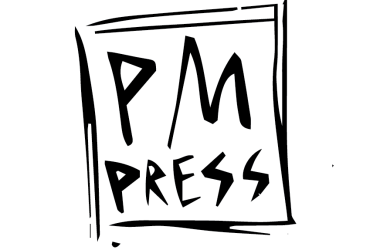A Wild Vitality: An Interview with Jerome Sala

by Jim Feast
Rain Taxi
I met Jerome Sala in a college class in Chicago in 1970. We became fast friends and, always being hipper than me, he introduced me to many strange byways in poetry, art, and music. I moved to New York City while he continued writing poetry and creating new ways of presenting it in Chicago; in 1981, he was crowned the first “heavyweight champion” of competitive literary bouts in that city, in a format that pre-dated (and inspired) the poetry slam. A few years later, Sala moved to New York City, where he and his spouse, the poet Elaine Equi, have been a vital part of the city’s poetry scene.
Sala, who holds a Ph.D. in American Studies from New York University and works as a copywriter, is the author of eight books of poems, the latest of which is How Much: New and Selected Poems (NYQ Books, $20). Other titles include Corporations Are People, Too! (NYQ Books, 2017), The Cheapskates (Lunar Chandelier, 2014), and Look Slimmer Instantly (Soft Skull Press, 2005). His poems and essays have appeared in The Brooklyn Rail, Conjunctions, Pleiades, Boundary 2, Rolling Stone, among other places, and he keeps a blog on poetry and pop culture called espresso bongo.
Jim Feast: It used to be noted how advertising and political platitudes were woefully diluting terms such as “democracy” or “freedom”; now, as you point out in poems such as “To Content,” it seems all language has lost significance. In response, your poems often take words from corporate jargon that never had any meaning in the first place and infuse them with a wild vitality. Is this one of your goals?
Jerome Sala: Definitely. Having worked as a copywriter for many years, I witnessed how sometime in the ‘90s, all types of creativity—music, video, writing, etc.—got dumped into a single category, “content.” Just as industrial capitalism gave birth to new abstractions such as “labor power” and “value,” the information economy now gave birth to this abstraction, and “To Content” is about this change. It begins:
you are like a word-picture-video flow
whose every element is special, but as part of a feed
(feeding whom?)
also generic
a textual form of meat product:
like the old Aristotelian notion of “substance”
nothing in itself
but the something out of which all is made
Since, as you mention, language is losing its specificity, I try to bring attention to this through satire; I treat the insignificant, the debased, as a source of great truth. Philip K. Dick, one of my idols, once theorized that the Logos could be found in cheap ads on the back of matchbook covers—I play with this idea in my poetry.
JF: In “Corporate Sonnets,” a sequence of Browning-like monologues, you present a gallery of sham entrepreneurs, cutthroats, business nobodies, and flimflammers, revealing the souls of speakers who, by definition, have no souls. I wonder whether these portraits are taken from life or are invented to represent the corporate typology.
JS: When I first started writing “Corporate Sonnets,” I collected business clichés from email solicitations, work conversations, business magazines, online ads, and motivational books. The idea was to satirize the language by collaging these expressions—none of the poems were portraits of actual people. But I discovered something surprising as I wrote: though the sonnets were made of nothing but jargon, they started to seem, almost by accident, as if they were characters speaking—Browning-esque, as you mention, or perhaps even like the voices in Edgar Lee Masters’s Spoon River Anthology. Here is the first “Corporate Sonnet” I composed:
I don’t know if I still have the bandwidth
to think outside of the box. I’m good at
identifying the low-hanging fruit
but innovation? Disruptive technologies?
That stuff may be for the millennials
to decide. Good luck to them. As for me,
well, there comes a time in all our lives
when you’ve got to just drink the Kool-Aid
and get with the program. Ok, sure,
you’ve no longer got the mojo
to break down any silos, but at least your
morale is no longer in the toilet.
I’m still entrepreneurial and proactive,
I’m collaborative, competitively priced and non-reactive.
The fact that this collection of expressions sounded like a someone baring their “soul” made me wonder if our souls were in fact made of clichés. In any case, when I performed the “Corporate Sonnets” at readings, it wasn’t just people who worked in offices that appreciated them; social workers, academics, and factory workers related to them too. It seems all walks of life are now defined by their jargon—and people are delighted when you make fun of it.
Today, cliché has invaded all realms of language. Sometimes I think that a dramatic play in which the actors communicate only in cliches might be both hilarious and poignant—it would “speak” to our moment in a particularly engaging way. As Umberto Eco quipped: “Two clichés make us laugh. A hundred clichés move us.”
JF: In a dialogue with Jack Skelley on the Best American Poetry blog, you say that in your poetry you often take “the most fleeting instances of culture and write about them as if they were holy monuments.” In conversation, you’ve told me this nuanced approach to pop culture was something you witnessed in the Chicago art and writing scene, and I wonder if you can say more about that here.
JS: One of the Chicago artists I was thinking about was Kevin Riordan, who created the cover for How Much? and many of my other books. With a connoisseur’s eye for trashy culture, he takes pop influence into a whole new dimension, collaging imagery not just from icons, but more esoteric sources. My wife, the poet Elaine Equi, guest-edited an issue of LAICA Journal (Los Angeles Institute of Contemporary Art) with Riordan on the theme of “discarded icons.” The contents of the issue, derived from ads, comic books, film, etc., wasn’t merely pop, it was obsolete pop—in a way, what was being celebrated was the fact that our culture is impermanent. Such an approach to pop culture is also influenced by punk, another strong force when I was growing up in Chicago. As an example of how Riordan’s pop collage approach has affected my writing of poetry, here are a few lines from “Hollywood Alphabet”:
I am an amateur alien living in Amityville
in a Batman costume, on leave from Babylon 5.
I can’t tell a cat from a canary from a Wes Craven movie from a
William Castle movie
yet I get déjà vu when I think of Philip K. Dick dancing with Judge
Dredd after dancing with a wolf.
T.S. Eliot once said that ethnographic study offered a form
of empowerment for Everyman – that and exploitative cinema.
Well maybe he didn’t. . . .
. . . . . . . . . . . . . . . . . . . . . . . . . . . . . . . . . . . . . .
Hollywood, you see, is more
about image appropriation than individuation—
as such it’s a Janus-faced town, a kind of Jurassic Park
where dinosaurs like Steven King, Freddy Krueger and Stanley
Kubrick have gone extinct
quicker than you can say Herschel Gordon Lewis, or the Legend of Hell House.
JF: The approach of treating mass culture as if its icons “were holy monuments” is a perspective not unknown in universities—an environment you are familiar with, since you have a doctorate in American Studies. However, something not typically found in campus productions is the slashing humor you use in such works as “Let’s Hear It for Frederick’s of Hollywood.” Indeed, you often have a triple-barreled comedy, poking fun at the absurd solemnity of pop culture, the pretensions of academic studies of pop culture, and the sacrosanct classics of poetry, which also come in for some good-natured swipes. How did your use of humor develop?
JS: There are three influences I’d like to mention when it comes to satiric/comedic touches. First, I’ve always loved comedians such as Rodney Dangerfield, Jerry Lewis, and Sarah Silverman. Second is a very traditional literary mode, the mock-heroic—I’m thinking here of Swift and Pope, who, to achieve their satiric effects, would write about commodities such as makeup and earrings as if they were mystic, alchemical objects.
Third is having worked as a copywriter. Marx, a great satirist himself, admired capitalism’s tendency to profane whatever it readied for sale, and an ad writer experiences this process in a very intimate way. You work with the arbitrariness of words—anything can be made to mean anything else. From this perspective, not just pop culture but academic study of it can seem a bit pompous. Nevertheless, I value “theory” and academic criticism highly; such writing helped me get through my job as a copywriter by exposing the ideological clichés that fuel business writing (something satirized in “Corporate Sonnets” and many of my other poems).
Speaking of ideology, it’s funny how even a classic cartoon series like The Flintstones reflects it. Historical research suggests that Stone Age societies were communistic; in the cartoon series, though, the society we see is a thriving, industrial capitalist one. The beginning of my poem on this series alludes to this goofy transformation:
stone age
communism
turns
capitalist
owning property
working for the man
and loving it
natural
as a brontosaurus crane
or a purple
pet dinosaur dog
named Dino
JF: I see your work as addressed to a specific audience. In your early Chicago performance poetry, there was a raucous give and take between you and the audience, with listeners often taking lines as individual insults or jokes. Now, in less raucous days, the audience is incorporated in each poem; not only is a sketch provided of the persona speaking the piece but there is an implicit profile of the audience this speaker is addressing.
JS: Thinking about audiences reflects, I guess, a vain wish that what I write could extend beyond a strictly poetry audience. In the old days, Elaine and I performed to crowds that were literary, arty, and punk. This mix is called out in a playful way in an early poem, “In the Company of the Now People”:
I wasn’t going to talk about all you over-the-hill go-go dancers
but here you all are in your little white go-go boots
and there’s Joe Tiger and Lenny Leopard
along with the lady wrestler with a bone in her hair
and mamma mia what next?
a Dalmatian in a tutu?
it just makes me stop and think—
I must be in the company of the now people
I guess you could say this early work addresses the nightlife of the crowd. Later, I started addressing daytime life—office work, for example. The approach turned to satirizing business talk, or even business fashion, and the funny ways the drama of nightlife gets funneled into the banality of daily work.
I’m not sure whether such writing appeals to a specific audience or not, but, judging from response at readings, people seem to get a kick out of poems written with this goal in mind.
JF: Both you and Elaine are fascinated with everyday products and how they change over time, but there is an interesting variation in the way you write about them. In her poem “Monogrammed Aspirin,” for example, she examines with a phenomenological lucidity how she reacted to the change in pill shape of Excedrin. By contrast, in your Coke sequence, you reflect on the philosophical implications of product change. What do you make of your mutual love of these objects—and the difference in the way you approach them?
JS: I think what both of us find appealing in these common objects and products is their very commonness. We both believe, in keeping with that Philip K. Dick quip I mentioned earlier, that if you’re looking for secrets about the way a culture works, you need to look at what you are numb to—the banal items you encounter daily. As you say, Elaine’s approach is more phenomenological, literally—phenomenology is her favorite branch of philosophy. In her poem “The Thing Is,” for example, she writes about how objects lack “the inner life” once bequeathed them; they have become cold, reified things. Her writing, influenced by Francis Ponge, rediscovers the aura of objects in witty, often humorous ways. An unusual feature of her style is that her writing can be mystical, even visionary, and humorous at the same time. If Elaine’s work is more concerned with the “object” part of the commercial object, I’m more fascinated by the marks of commerce it bears. What caught my interest about the marketing of New Coke, Classic Coke, and Cherry Coke back in the ‘80s was how the flavor of each carried an ideological message: New Coke’s sweetness preached the optimism of youth (it was closer to Pepsi, a brand marketed as “young”), Classic Coke the seriousness of tradition, and Cherry Coke predicted our current moment, in which brands turn profits by marketing diversity.
JF: When we were in college, you introduced me to an older painter, Lady Bunny, and her Bohemian friends. The Bohos, I learned, had preceded the Beats and considered themselves the real outlaws. Your verse sometimes portrays this division between outsider groups. In poems such as “Beatnik Stanzas,” where you intone, “no madness / no angels / . . . / no gone daddios / no haunted lightning,” you look askance at the Beat zeitgeist; in other pieces, such as “The Stoners,” you speak of a more authentic underclass group that contains “rogue impulses.” I see this as you suggesting that even if some countercultural groups may end up seeming “square,” there will always be a group resisting the corporate program.
JS: What I was satirizing in “Beatnik Stanzas” was not the actual Beats themselves, who produced some of my favorite writing, but the commodification of their image (think of the classic sitcom The Many Loves of Dobie Gillis or Roger Corman’s wonderful film A Bucket of Blood). That’s why the poem is filled with goofy lines like “my visioned darkened / and I threw away my turtleneck / in a dream.” But the phenomenon you mention, one generation casting doubt on another, helped me see how what’s cool can become cliché within the space of a few years. In comparison, a poem like “The Stoners” displays a hint of optimism. As you suggest, it states that no matter how the image of “the rebel” is commodified, a new generation appears with a workaround; punk, for example, appropriated the appropriators—repurposing trashy culture for its own uses—and that appropriation has already been reappropriated, as might be expected. Nevertheless, when something becomes a cliché, there is usually a segment of the culture that abandons it. Lightning cannot be housed in a bottle. As Bakhtin wrote, “There always remains an unrealized surplus of humanness . . . All existing clothes are always too tight, and thus comical.” Or as “The Stoners” puts it,
How is it then that these flaneurs continually rise from extinction
. . . . . . . . . . . . . . . . . . . . . . . . . . . . . . . . . . . . . .
Are they something more than themselves—
rogue impulses without words or images of their own
but which nevertheless, like a flood
pick up people, houses and trees along the way
to a destination they never reach?
Rain Taxi Online Edition Spring 2023 | © Rain Taxi, Inc. 2023




